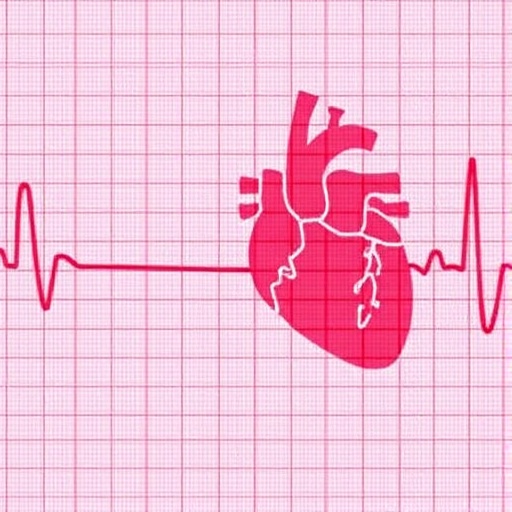
In an era where artificial intelligence (AI) holds the potential to revolutionize healthcare diagnostics, a groundbreaking study brings forth a new dimension in the detection of specific arrhythmias. Conducted by a team of researchers led by M.E. Kilic, this research employs explainable AI techniques to delve deep into multi-lead electrocardiogram (ECG) data. The pivotal aim is to unveil the hidden patterns that assist in the diagnosis and understanding of arrhythmias, which are irregular heartbeats that, if not detected early, can pose severe health risks.
Arrhythmias are currently a leading cause of morbidity and mortality worldwide. They can manifest in various forms and degrees of severity, ranging from harmless palpitations to life-threatening conditions that can lead to stroke or sudden cardiac arrest. Traditional diagnostic methods often rely heavily on the clinical expertise of healthcare professionals to interpret ECG results. However, the complexity and volume of data generated by multi-lead ECG systems can overwhelm even the most seasoned specialists. This is where AI’s intervention becomes crucial, offering a systematic approach to discern intricate patterns that might elude human analysis.
The innovative aspect of Kilic’s research centers on the implementation of SHAP, which stands for SHapley Additive exPlanations. This method provides a comprehensive view of the AI decision-making process by attributing the output of a machine learning model to the input features. By applying SHAP, the researchers can not only determine whether an arrhythmia is present but also understand the specific characteristics of the ECG data that contribute to the model’s predictions.
Multi-lead ECG systems have the capacity to capture a more detailed electrical activity of the heart compared to single-lead setups. This wealth of information is invaluable for identifying subtle arrhythmic features that typically fly under the radar in conventional ECG readings. The challenge, however, lies in translating this multidimensional data into actionable insights. This study aimed to bridge that gap—using AI not merely as a predictive tool but also as a guide to enhancing the interpretability of its findings.
Through a rigorous analysis of varied multi-lead ECG datasets, the research team demonstrated that their explainable AI model could significantly outperform traditional diagnostic methods in detecting specific arrhythmias. By dissecting the way the model interprets ECG signals, clinicians can gain a clearer view of the underlying dynamics that contribute to irregularities in heart rhythms. This fusion of technology and medicine not only amplifies diagnostic accuracy but also informs personalized treatment strategies, aligning with the shift towards more tailored patient care.
The importance of explainability in AI cannot be overstated, especially in clinical settings where decisions can mean the difference between life and death. Interpretability is a vital component in building trust among healthcare professionals. By understanding how AI derives its conclusions, doctors are more likely to embrace its recommendations, leading to improved patient outcomes. The SHAP methodology stands out in this regard, illuminating the path from data input to predictive output in understandable terms.
Additionally, this research signifies the onset of a new wave of AI capabilities in cardiology. As the healthcare landscape becomes increasingly intertwined with technology, the implications of these findings are profound, fostering a culture of collaborative practice where AI tools augment human expertise rather than replace it. The synergy between AI and clinical judgment can pave the way for advanced diagnostic frameworks that enhance clinical workflows.
While the study emphasizes the efficacy and reliability of explainable AI in detecting arrhythmias, it also raises essential questions about the integration of these technologies into existing healthcare systems. As AI systems are gradually adopted, ensuring proper training and understanding among healthcare professionals is paramount. This research serves as a seminal step toward that goal, presenting a transparent model that demystifies AI’s operations in medical diagnosis.
Moreover, the broad applicability of SHAP-based insights could extend beyond cardiology, influencing various domains of medical analytics. The principles established in this study could inspire future investigations that employ similar frameworks in the detection of other medical conditions, thereby enriching the larger narrative in healthcare AI.
The impact of this study is not merely academic; it illustrates a tangible progression toward actionable AI applications that can reshape treatment paradigms. As we stand at the intersection of technological innovation and healthcare, the need for explainable AI becomes imperative, safeguarding patient welfare while embracing the efficiency that modern technologies offer.
Ultimately, the potential of explainable AI in arrhythmia detection represents a significant leap towards integrating advanced analytics into clinical practice. This frontiers of medical technology heralds a future where rapid, accurate diagnostics could become a standard, thereby revolutionizing not only treatment protocols but also the overall patient experience. By bridging the gap between data science and medical expertise, this research underscores the essence of innovation in achieving holistic healthcare solutions.
The rigorous evaluation of the model against diverse datasets illustrates the breadth of this research. With the promise of high accuracy and interpretability, the findings advocate for a paradigm shift in how arrhythmias are diagnosed and treated. The groundbreaking nature of this research stands as a testament to what collaborative effort between technology and medicine can achieve—ushering in an age defined by smarter, more precise healthcare.
In conclusion, the advances in arrhythmia detection through explainable AI mark a pivotal moment for not only cardiology but for the healthcare sector at large. As practitioners begin to harness these technologies in their workflows, the potential for improved patient outcomes and enhanced diagnostic capabilities could redefine the landscape of medical practice. This study is but the first step in what could be a transformative journey in the application of AI within clinical environments, fostering a new era of informed decision-making in patient care.
Subject of Research: Explainable AI techniques for arrhythmia detection using multi-lead ECG data.
Article Title: Explainable AI for Specific Arrhythmia Detection: SHAP-Based Insights from Multi-Lead ECG Data.
Article References:
Kilic, M.E., Tufekcioglu, O.A., Yilancioglu, Y.R. et al. Explainable AI for Specific Arrhythmia Detection: SHAP-Based Insights from Multi-Lead ECG Data.
J. Med. Biol. Eng. 45, 314–324 (2025). https://doi.org/10.1007/s40846-025-00949-0
Image Credits: AI Generated
DOI: https://doi.org/10.1007/s40846-025-00949-0
Keywords: Explainable AI, arrhythmia detection, multi-lead ECG, SHAP, healthcare innovation, machine learning, patient care, clinical practice.
Tags: AI-driven healthcare solutionsarrhythmia diagnosis and managementartificial intelligence in cardiologydetecting specific arrhythmiasenhancing clinical decision-making with AIexplainable AI in healthcarehealthcare diagnostics revolutionintricate pattern recognition in ECGmulti-lead ECG data interpretationreducing morbidity and mortality from arrhythmiasSHAP insights for ECG analysisSHAP methodology in medical research




